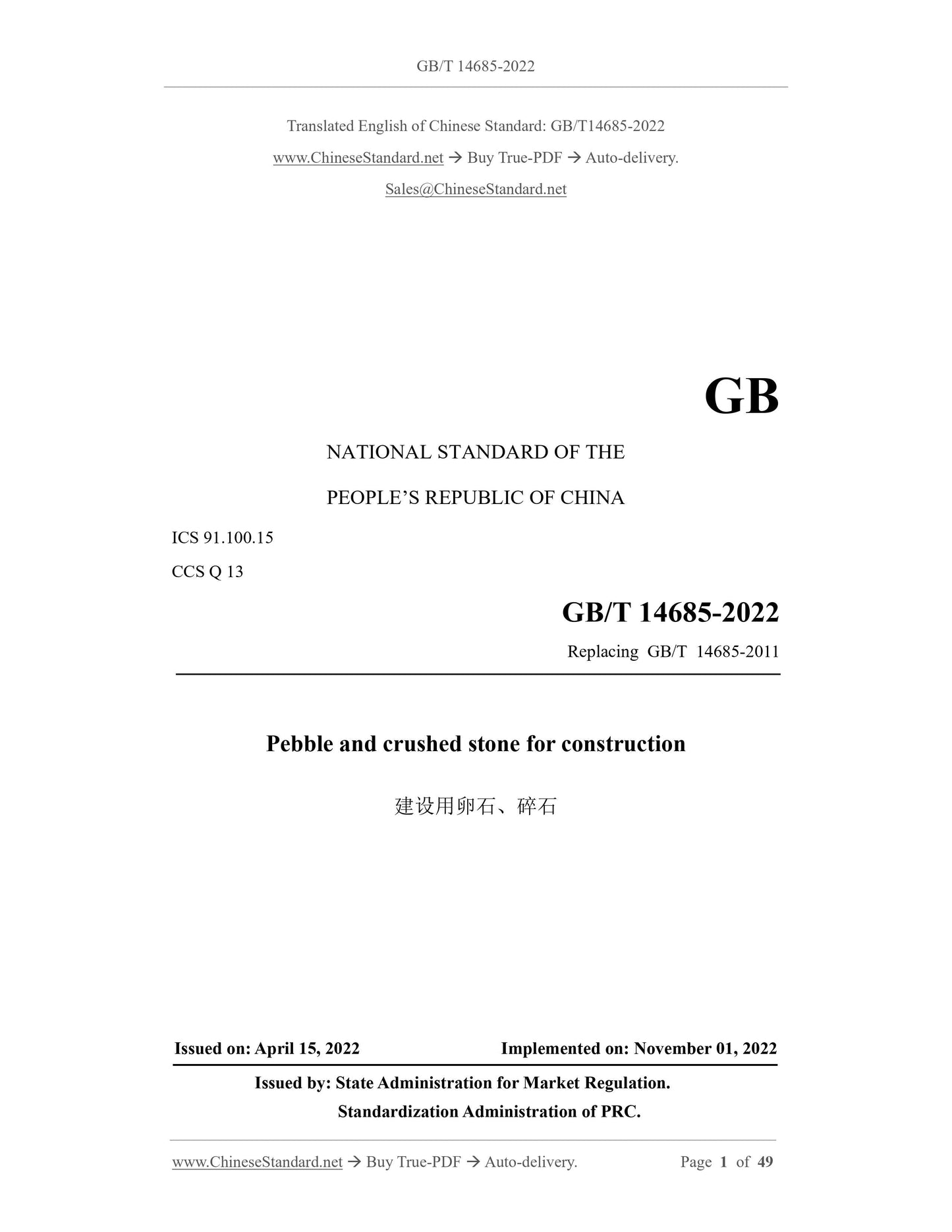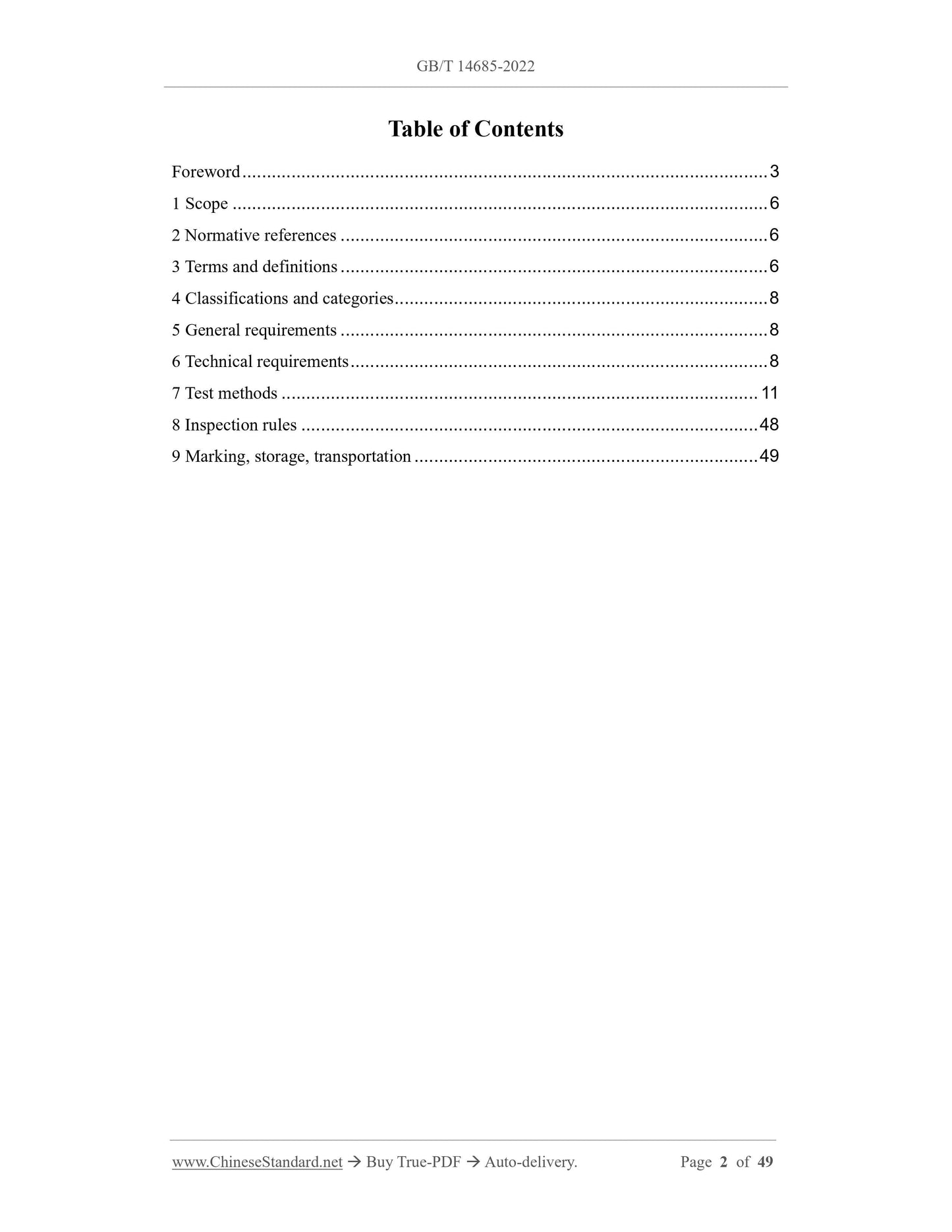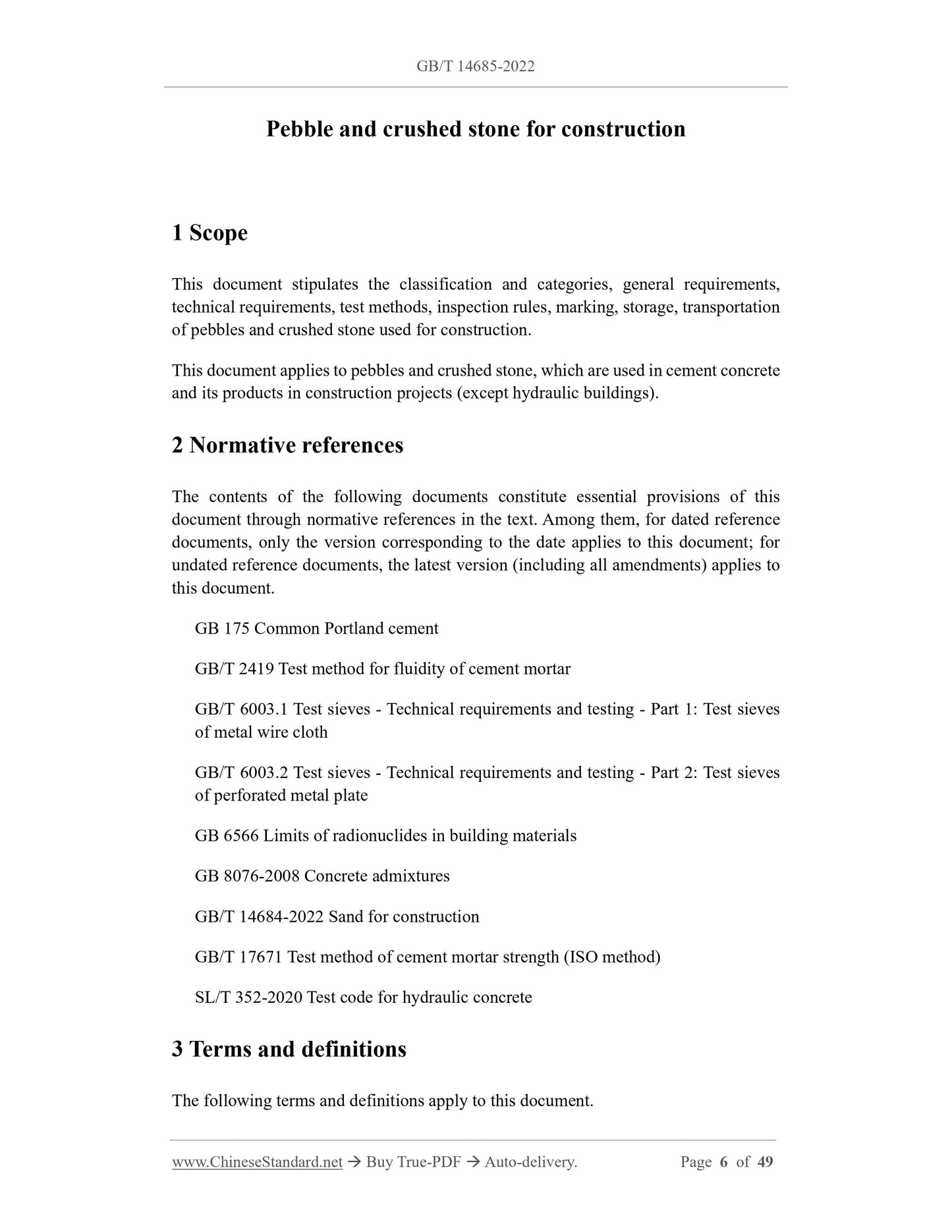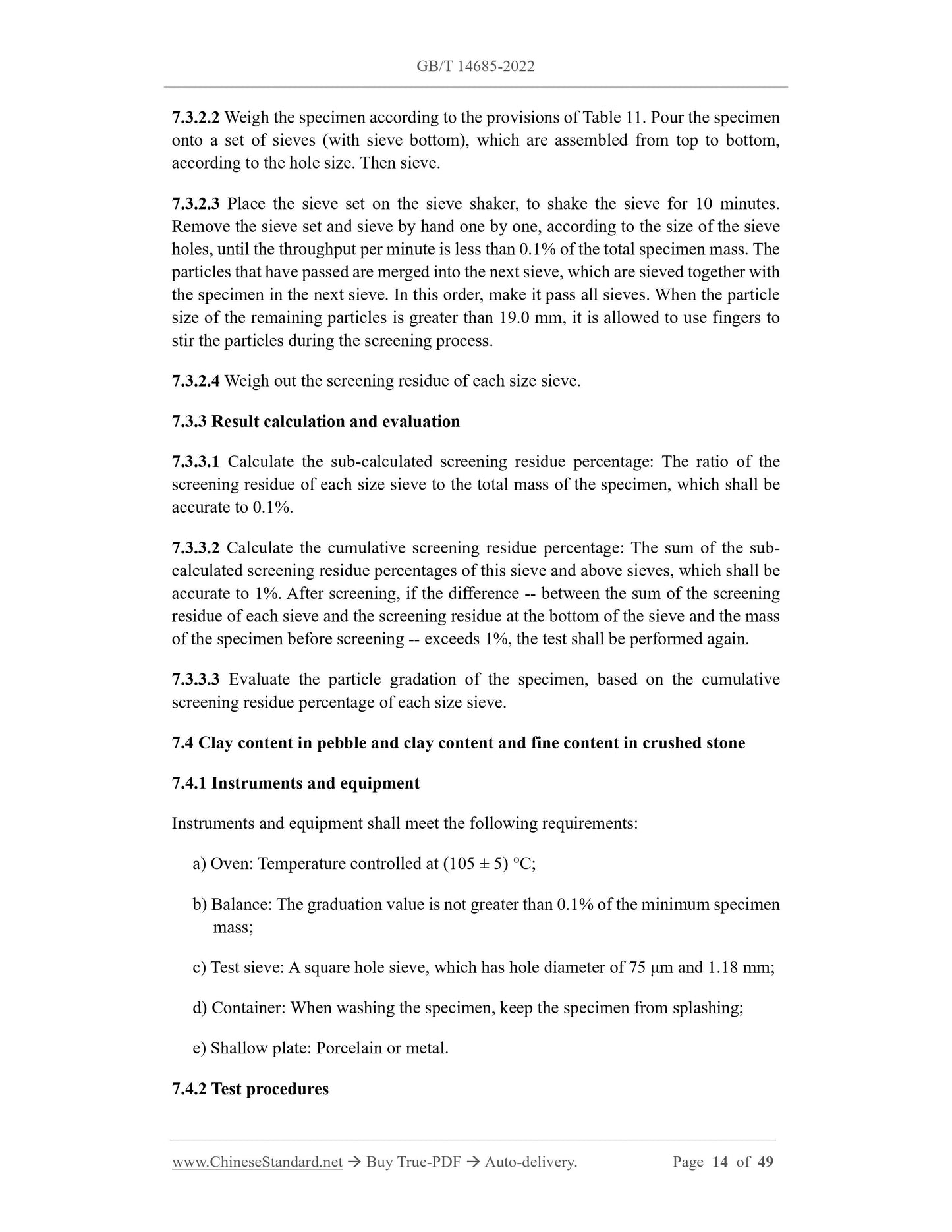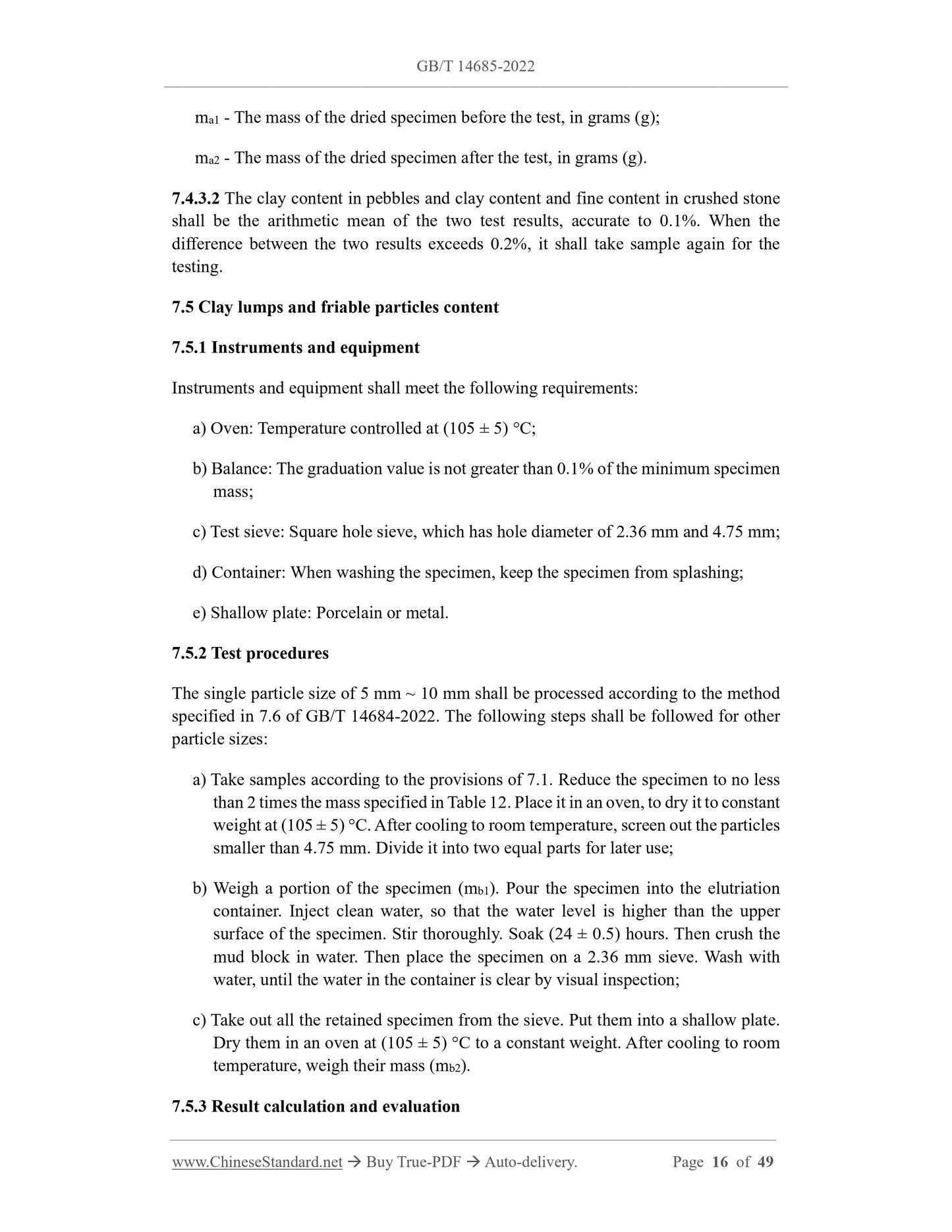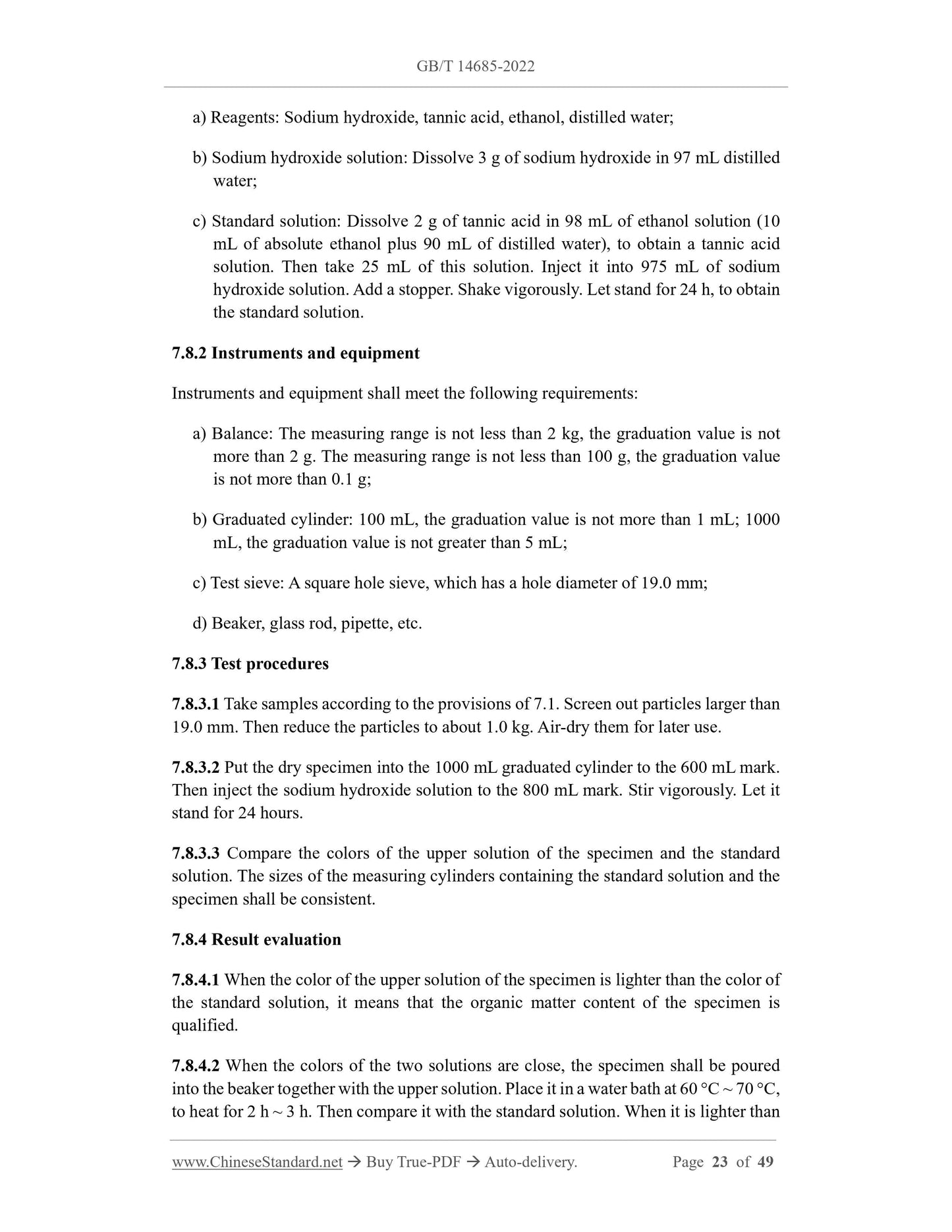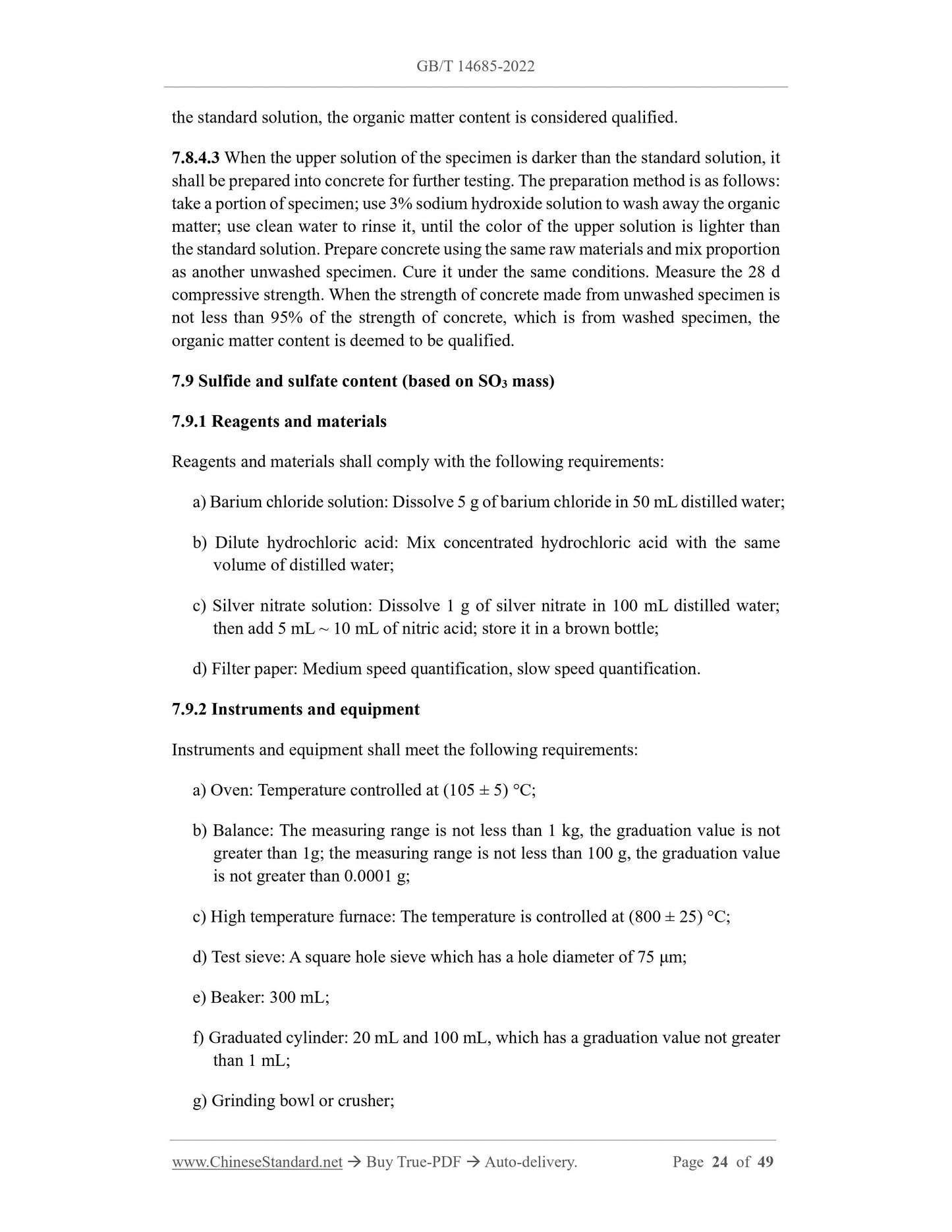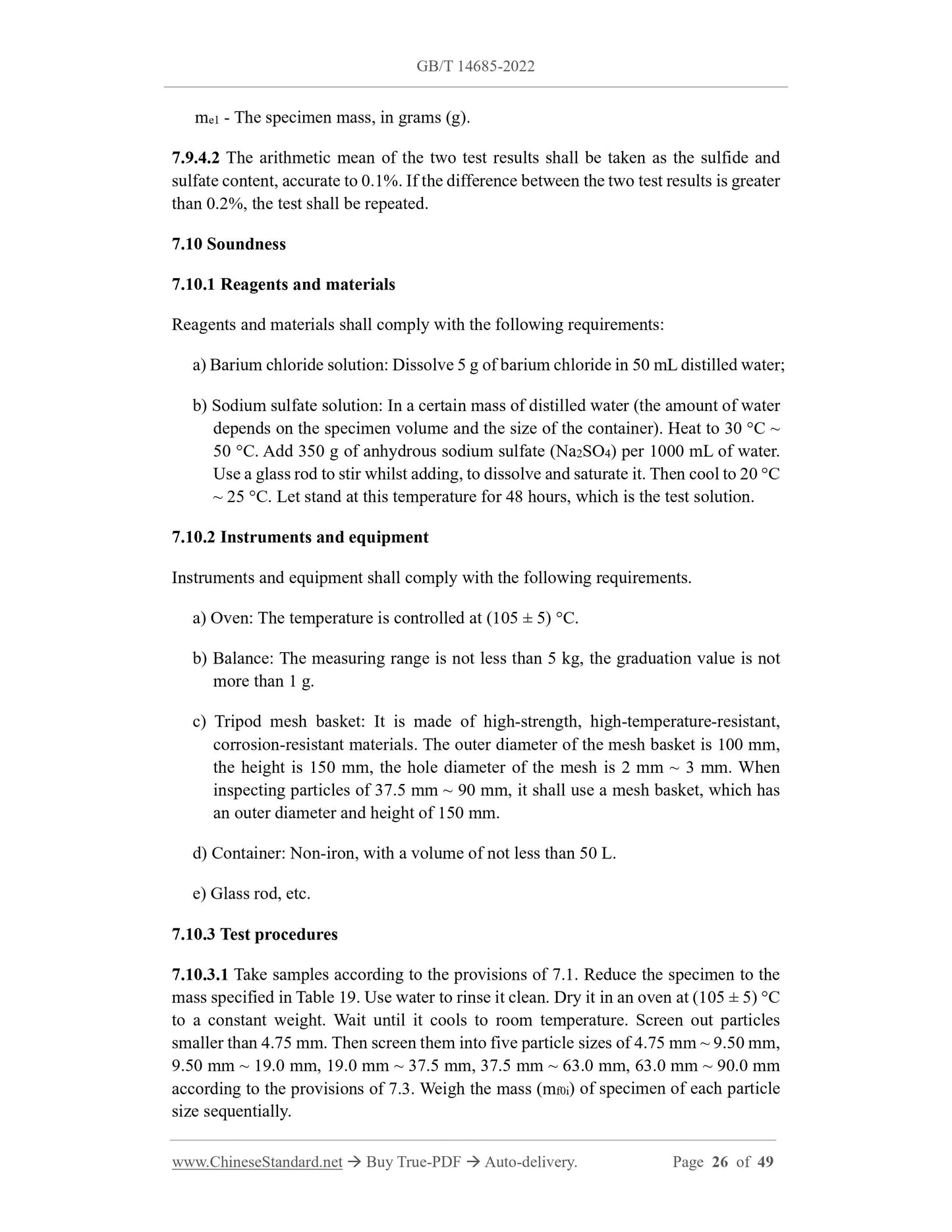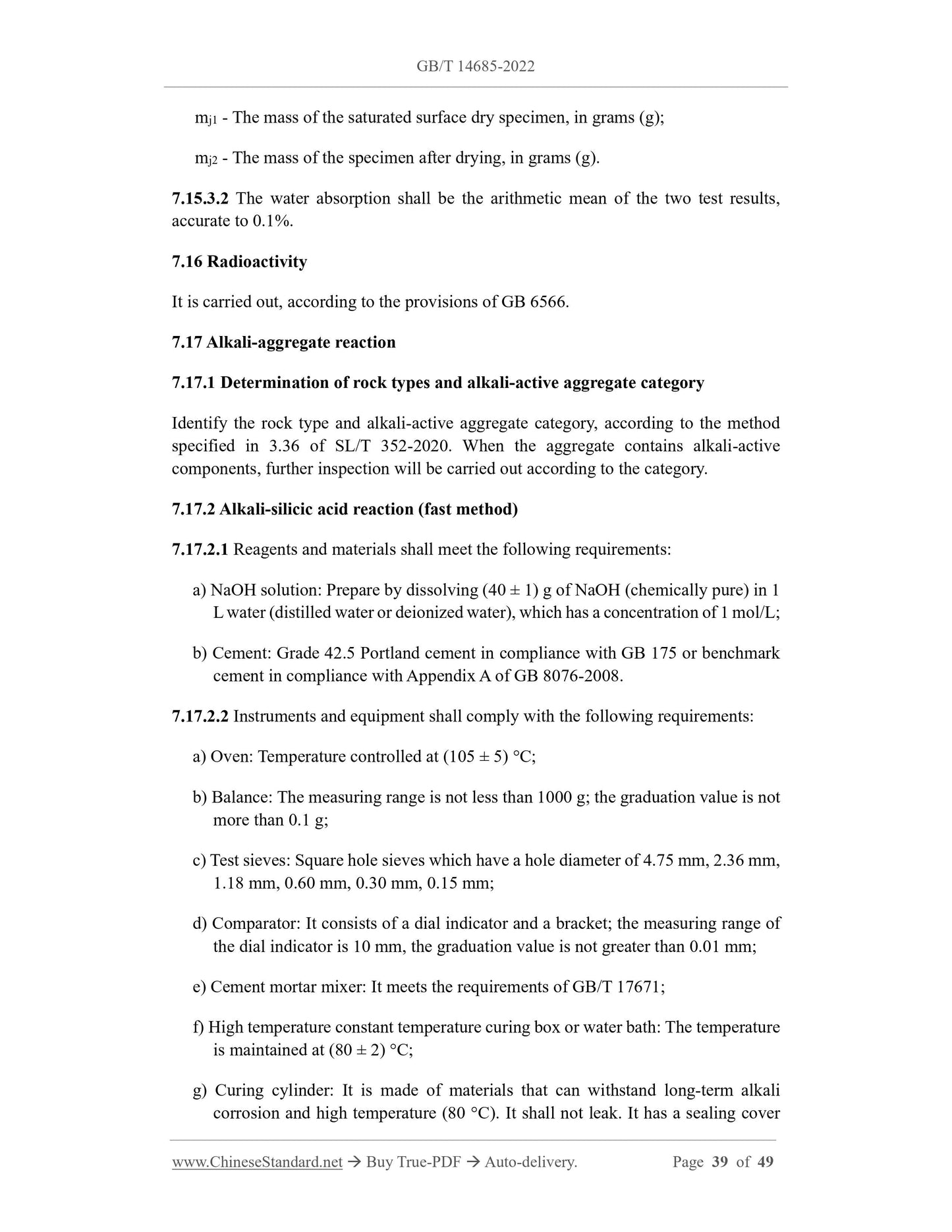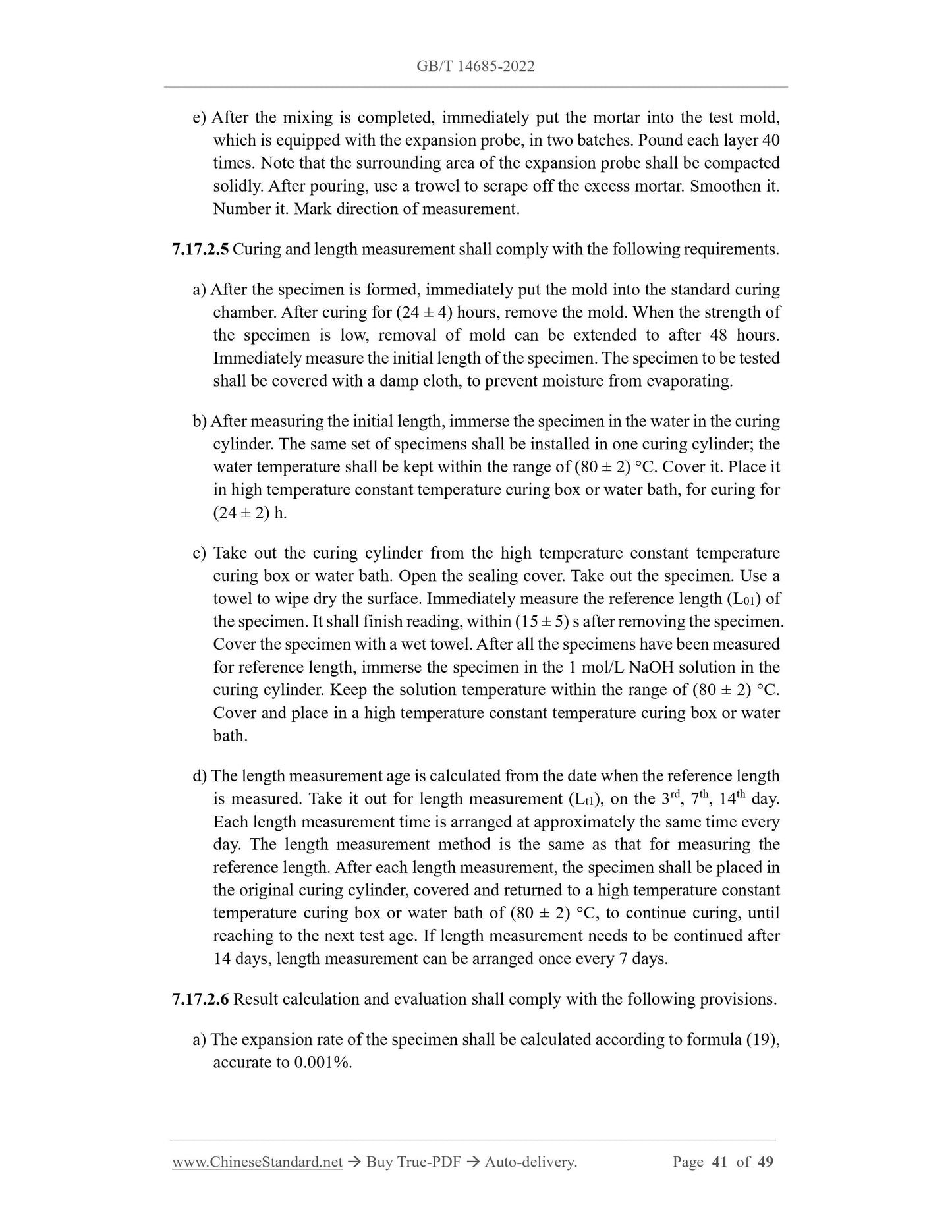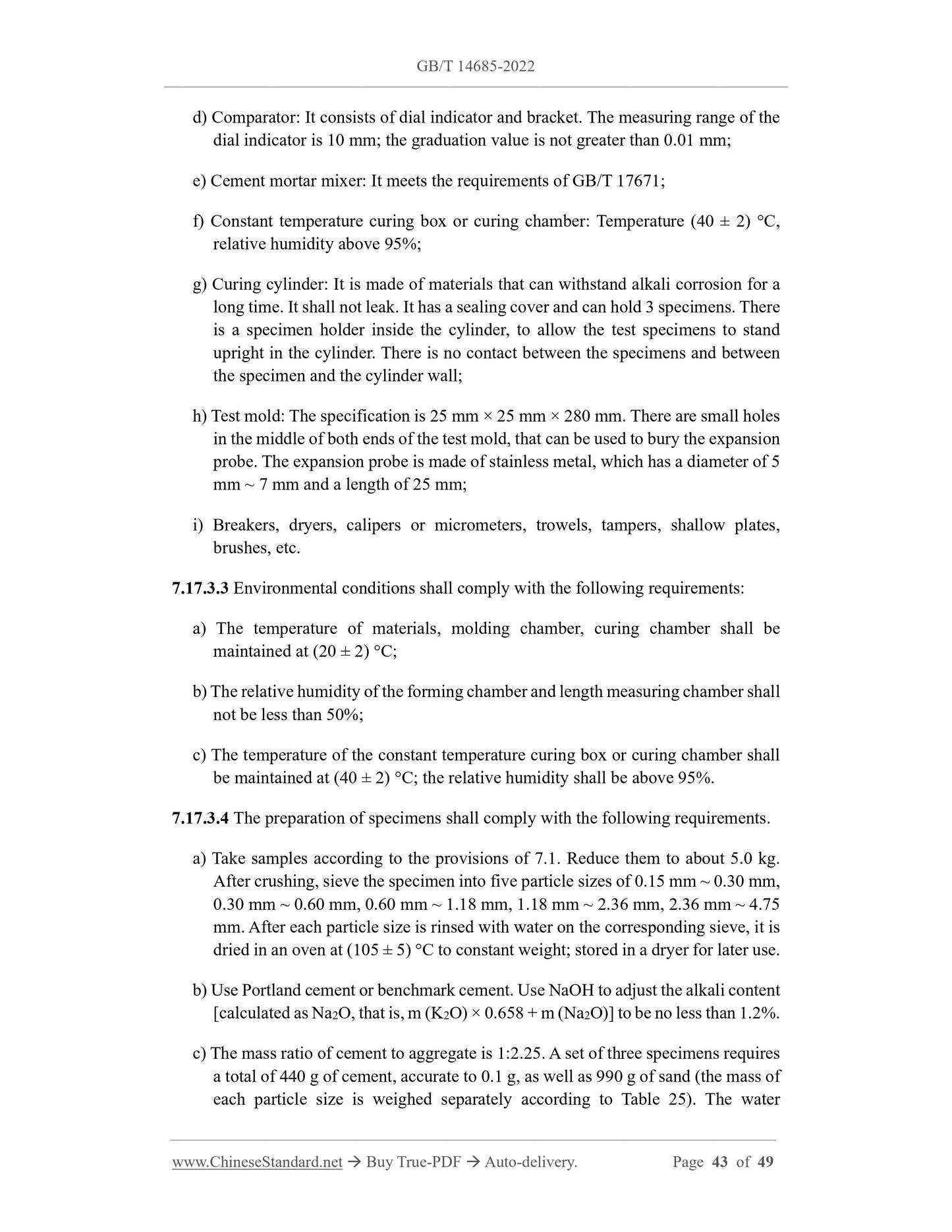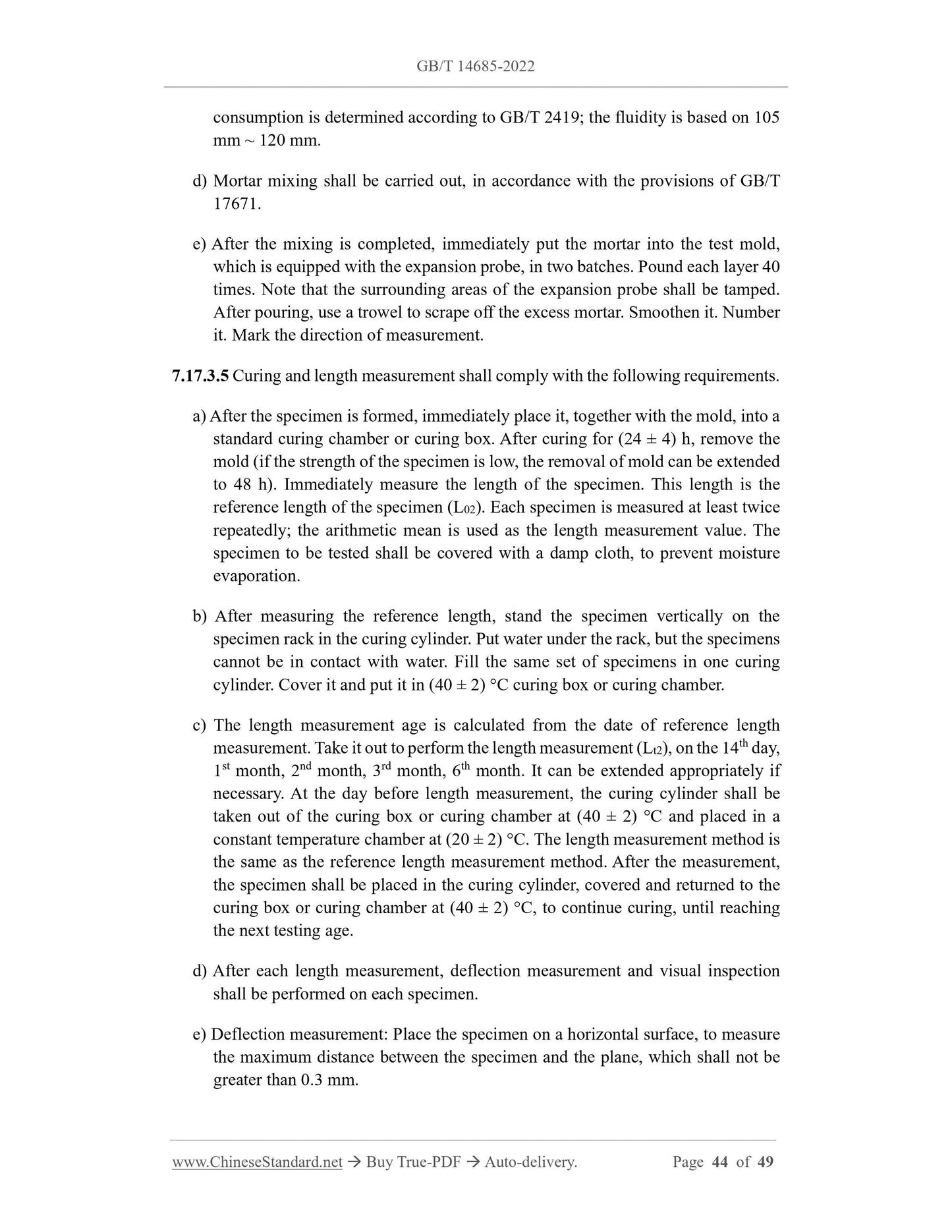1
/
of
12
www.ChineseStandard.us -- Field Test Asia Pte. Ltd.
GB/T 14685-2022 English PDF (GB/T14685-2022)
GB/T 14685-2022 English PDF (GB/T14685-2022)
Regular price
$500.00
Regular price
Sale price
$500.00
Unit price
/
per
Shipping calculated at checkout.
Couldn't load pickup availability
GB/T 14685-2022: Pebble and crushed stone for construction
Delivery: 9 seconds. Download (and Email) true-PDF + Invoice.Get Quotation: Click GB/T 14685-2022 (Self-service in 1-minute)
Newer / historical versions: GB/T 14685-2022
Preview True-PDF
Scope
This document stipulates the classification and categories, general requirements,technical requirements, test methods, inspection rules, marking, storage, transportation
of pebbles and crushed stone used for construction.
This document applies to pebbles and crushed stone, which are used in cement concrete
and its products in construction projects (except hydraulic buildings).
Basic Data
| Standard ID | GB/T 14685-2022 (GB/T14685-2022) |
| Description (Translated English) | Pebble and crushed stone for construction |
| Sector / Industry | National Standard (Recommended) |
| Classification of Chinese Standard | Q13 |
| Word Count Estimation | 34,328 |
| Issuing agency(ies) | State Administration for Market Regulation, China National Standardization Administration |
Share
